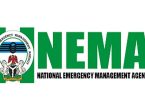By Chukwuemeke Iwelunmo
To unravel the immediate cause of the chopper crash which terminated the lives of the Access Bank CEO, Herbert Wigwe, his wife, son and others in the United States, the Nigerian Safety Investigation Bureau (NSIB) has offered its full cooperation to the American National Transportation Safety Board (NTSB).
The tragic Airbus Helicopter EC130B4 which crashed last Friday night resulted in the death of Dr Herbert Wigwe, Group CEO of Access Holdings and five others who were onboard the ill-fated chopper.
The latest update which was contained in a statement issued by Mrs Bimbo Olawunmi Oladeji, Director, Public Affairs and Consumer Protection, Nigerian Safety Investigation Bureau emphasised the role of NSIB as the multimodal transport agency in Nigeria saddled with the responsibility of promoting transport safety and conducting objective and thorough, investigations into transport accidents.
READ ALSO: Mercy Eke finds love again
Similarly, the NTSB is the counterpart agency in the United States charged with fulfilling the same function as the NSIB.
Following the helicopter crash which occurred on Friday, February 9, 2024, at about 10:08 PM. (Pacific Standard Time) near Interstate 15 in Halloran Springs, California, the NTSB confirmed the accident via its post on X and stated that it had dispatched its “Go Team” to investigate the accident.
The ill-fated helicopter, operated by Orbic Air, LLC as a Part 135 charter flight, departed from Palm Springs, California, at 8:45 p.m. PST, en route to Boulder City, Nevada, said Michael Graham, a board member of the National Transportation Safety Board, during a news conference on Saturday.
“Regrettably, the United States authorities have now confirmed that everyone onboard the aircraft lost their lives in the crash. The deceased are two crew members comprising a pilot in command and a “safety pilot” and four passengers namely Dr Herbert Wigwe, his wife, son, and Mr Abimbola Ogunbanjo, former Group Chairman of the Nigerian Exchange Group Plc, (NGX Group).
“In the aftermath of the accident, the Director General of the Nigerian Safety Investigation Bureau, Captain Alex Badeh established contact with NTSB, by Chapter 5 subsection 27 of ICAO’s Annex 13 to the Convention on International Civil Aviation – Aircraft Accident and Incident Investigation, which grants a State (nation) special interest in an accident involving its citizens. 5.27 A State which has a special interest in an accident by fatalities or serious injuries to its citizens shall be entitled to appoint an expert who shall be entitled to: visit the scene of the accident; and have access to the relevant information which is approved for public release by the State conducting the investigation, and information on the progress of the investigation; and receive a copy of the Final Report.ICAO’s Annex 13 to the Convention on International Civil therefore grants Nigeria, through the Nigerian Safety Investigation Bureau, the prerogative to appoint an expert to actively participate in the investigation.
This participation ensures access to relevant information and facilitates cooperation with the investigating authorities, towards ensuring the investigation reaches a conclusive outcome.
The ongoing discussion between the NSIB and NTSB has highlighted the diligent investigation efforts of the NTSB.
NTSB investigators were present at the crash scene in Halloran Springs, California, on Saturday to collect evidence and conduct initial on-scene documentation. The documentation process included aerial mapping of the wreckage with a drone, and site measurements.
Correspondence between the NSIB and NTSB further revealed that the NTSB investigation into the crash is being led by Aaron Sauer as the investigator in charge, supported by Mark Ward as the deputy investigator in charge.
“Several other NTSB investigators will also be examining various aspects of the accident including airworthiness and maintenance structures, operations, meteorology and air traffic control. Notably, the airworthiness investigation group initiated a meticulous examination of the debris field, which spans approximately 100 yards. All significant components of the helicopter, including the main transmission, engine, and various avionic elements, were identified and accounted for at the accident site.
In tandem, the operations investigation group has commenced gathering crucial company information, including pilot records, flight dispatch records, and aircraft maintenance records.
Moving forward, coordination is underway by the NTSB to transfer the wreckage to a secure location on Tuesday for in-depth examination and analysis scheduled Parties to the investigation include Orbic Air, LLC, and the FAA. As the investigation continues, other parties could be named.
Additionally, the Bureau of Enquiry and Analysis for Civil Aviation Safety (BEA), the French aviation accident investigation agency, will also serve as an accredited representative, due to France being the state of manufacturer the Airbus helicopter and Turbomeca Engine. Both Airbus Helicopters and Turbomeca Engines will serve as technical advisors to the investigation.
The duration of the accident investigation being conducted by NTSB is expected to take approximately 18 to 24 months to complete. The actual duration depends on many factors. Each investigator carries a caseload of many accident investigations which they work on concurrently and each investigation presents its unique complexities.
The NTSB accident investigation process typically comprises three major milestones. The first is the preliminary investigation report, which contains information gathered by investigators during the on-scene examination. This report is expected to be released within 14 to 21 days following the date of the examinations.
The next milestone involves the compilation of the public docket, which includes a collection of information gathered throughout the investigation. This typically includes photographs, interview summaries, documentation, and other relevant data. Finally, the third milestone is the publication of the final aviation accident report, which serves to conclude the investigation. This report may take up to two years to complete and usually contains analysis and a statement of the probable cause of the accident if determined.”
The Nigerian Safety Investigation Bureau reaffirms its commitment to collaborate fully with the National Transportation Safety Board, aiming for a thorough and conclusive investigation that will enhance transport safety in both Nigeria and the United States.












Leave a Comment
You must be logged in to post a comment.